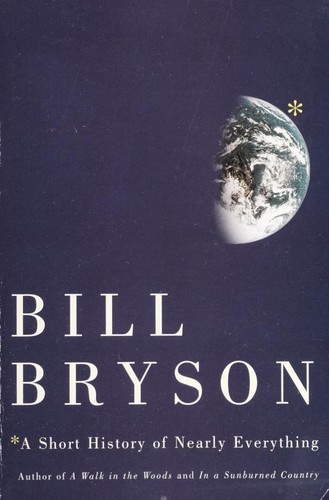Core Frameworks and Concepts
In “A Short History of Nearly Everything,” Bill Bryson embarks on a comprehensive exploration of the universe and our place within it. This treatise serves both as a celebration of scientific discovery and a critique of scientific complexity. The core framework of the book revolves around making science accessible and understandable, focusing on four major themes: cosmology, geology, biology, and anthropology. Each theme is carefully dissected to provide insights into the world around us.
Cosmology: Understanding Our Universe
Bryson begins with the vastness of cosmology, exploring the universe’s origins and the fundamental forces that govern it. He draws parallels to Stephen Hawking’s “A Brief History of Time,” which also elucidates the complexities of the cosmos. Bryson simplifies these intricate concepts by using tangible analogies. For instance, he compares the Big Bang to an inflated balloon, illustrating how space itself expands, dragging galaxies along with it. This approach demystifies the sheer scale and phenomena of cosmic expansion.
Geology: The Earth’s Story
Transitioning to geology, Bryson highlights the Earth’s dynamic nature. He references James Hutton’s theory of uniformitarianism, akin to John McPhee’s “Annals of the Former World,” which underscores the slow but persistent forces shaping our planet. Bryson offers vivid imagery, likening geological processes to a slow-moving but relentless river, carving landscapes over millennia. This metaphor helps readers appreciate the gradual yet powerful forces at play beneath our feet.
Biology: The Miracle of Life
In his examination of biology, Bryson delves into the intricacies of life itself, from the cellular level to complex ecosystems. He draws comparisons with Richard Dawkins’ “The Selfish Gene,” which similarly explores the genetic underpinnings and evolution of life. Bryson describes DNA as a recipe book for life, with genes acting as individual instructions. This analogy simplifies the concept of genetic information encoding, making it relatable and easier to grasp.
Anthropology: The Human Journey
Finally, Bryson turns to anthropology, tracing humanity’s evolution and cultural developments. He parallels Jared Diamond’s “Guns, Germs, and Steel,” which examines the environmental and geographical factors shaping human societies. Bryson uses the analogy of a patchwork quilt to describe cultural diversity, each piece representing a distinct societal contribution. This helps readers visualize the complexity and interconnectivity of human history.
Integrating Scientific Disciplines
The strength of Bryson’s framework lies in its interdisciplinary approach. By weaving together stories from different scientific realms, he creates a cohesive narrative that underscores the interconnectedness of our world. This multi-faceted perspective is reminiscent of Yuval Noah Harari’s “Sapiens,” which similarly blends disciplines to offer a broad understanding of human history.
Key Themes
1. The Nature of Scientific Discovery
Bryson emphasizes the serendipitous nature of scientific breakthroughs. Many significant discoveries, he notes, were the result of accidental observations or unexpected results. For instance, the discovery of penicillin by Alexander Fleming was a fortuitous accident that revolutionized medicine. This theme resonates with Thomas Kuhn’s “The Structure of Scientific Revolutions,” which argues that science progresses through paradigm shifts rather than linear accumulation.
2. The Complexity of the Universe
A recurring theme in Bryson’s work is the overwhelming complexity of the universe. He illustrates this with the example of quantum mechanics, a field that challenges our understanding of reality. Bryson likens quantum mechanics to a puzzle with pieces that constantly change shape, reflecting its perplexing nature. This theme aligns with Brian Greene’s “The Elegant Universe,” which explores the intricate and often counterintuitive aspects of modern physics.
3. The Fragility of Life
Bryson poignantly discusses the precariousness of life on Earth. He highlights extinction events, such as the asteroid impact that wiped out the dinosaurs, as reminders of life’s vulnerability. This theme echoes Rachel Carson’s “Silent Spring,” which warns of the environmental dangers threatening biodiversity. By drawing attention to these risks, Bryson advocates for greater environmental awareness and stewardship.
4. The Interconnectedness of Knowledge
The book illustrates how different scientific disciplines intersect and inform one another. Bryson describes how advancements in chemistry, for instance, have propelled discoveries in biology, providing insights into cellular processes. This theme is reminiscent of James Gleick’s “Chaos: Making a New Science,” which explores how chaos theory bridges gaps between seemingly disparate fields. Bryson’s holistic approach encourages readers to appreciate the collaborative nature of scientific progress.
5. The Role of Curiosity and Wonder
Finally, Bryson champions the role of curiosity in driving scientific inquiry. He recounts stories of scientists whose insatiable curiosity led to groundbreaking discoveries, from Marie Curie’s pioneering work on radioactivity to Galileo’s astronomical observations. This theme parallels Carl Sagan’s “Cosmos,” which celebrates the human spirit of exploration and the desire to understand the universe. Bryson’s narrative inspires readers to embrace their curiosity and pursue knowledge with enthusiasm.
Final Reflection
“A Short History of Nearly Everything” is not just a compendium of scientific facts; it is a narrative journey that invites readers to ponder the mysteries of existence. By weaving together insights from cosmology, geology, biology, and anthropology, Bryson creates a tapestry that highlights the interconnectedness of all knowledge. This approach is reminiscent of interdisciplinary studies, where understanding is deepened through the integration of multiple perspectives.
In synthesizing these themes, Bryson’s work can be applied across various domains. In leadership, for example, the idea of embracing complexity and fostering curiosity can drive innovative problem-solving and strategic thinking. In design, the principle of interconnectedness can lead to more holistic and user-centered solutions. In the realm of change management, understanding the role of serendipity and adaptability can enhance flexibility and resilience.
Ultimately, Bryson’s book serves as a reminder of the vastness and wonder of the universe, encouraging readers to remain curious and open-minded. It underscores the importance of viewing challenges and opportunities through a multi-disciplinary lens, fostering a deeper appreciation for the world and our place within it. Through this expansive exploration, Bryson leaves us with a profound sense of awe and a renewed commitment to lifelong learning.

